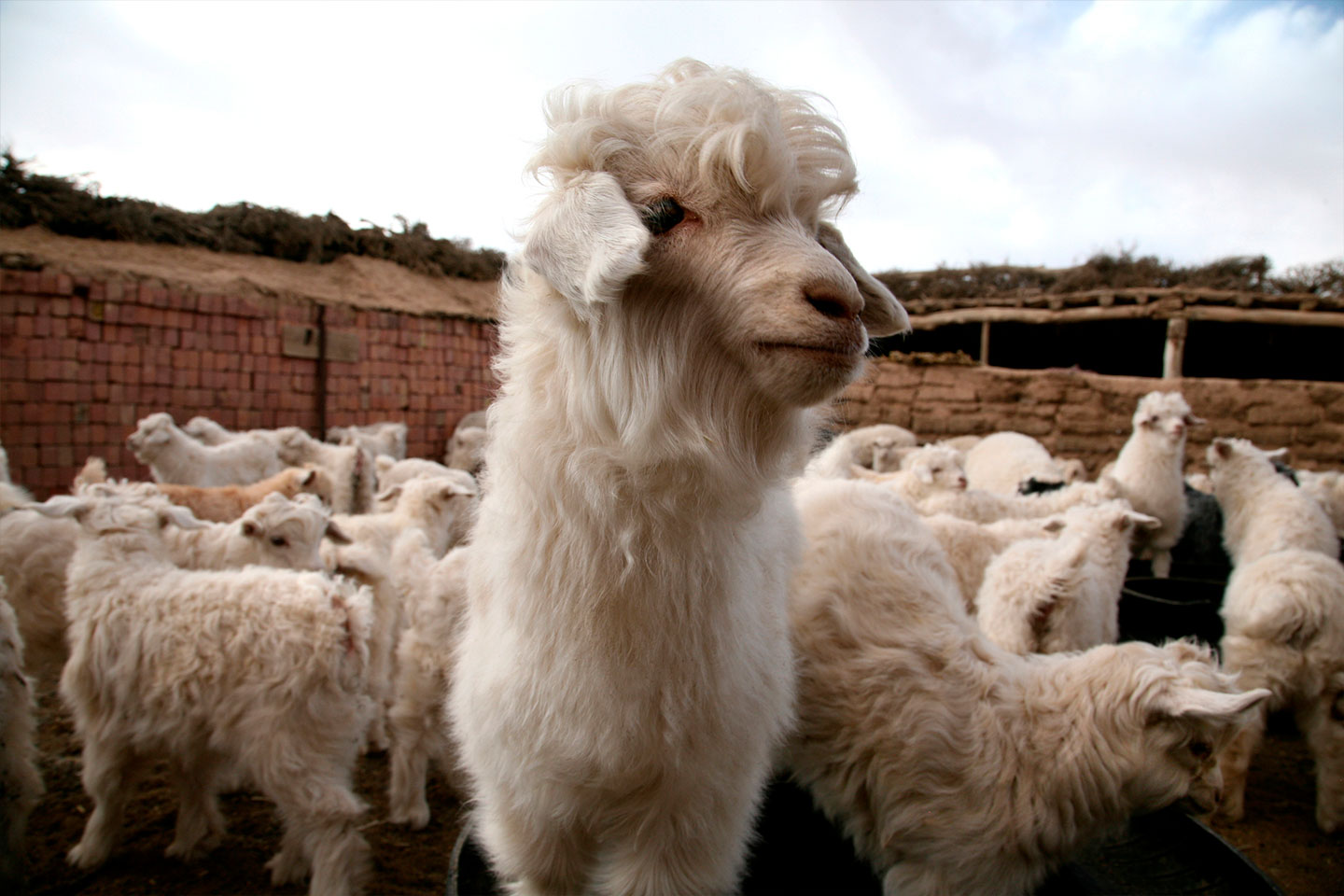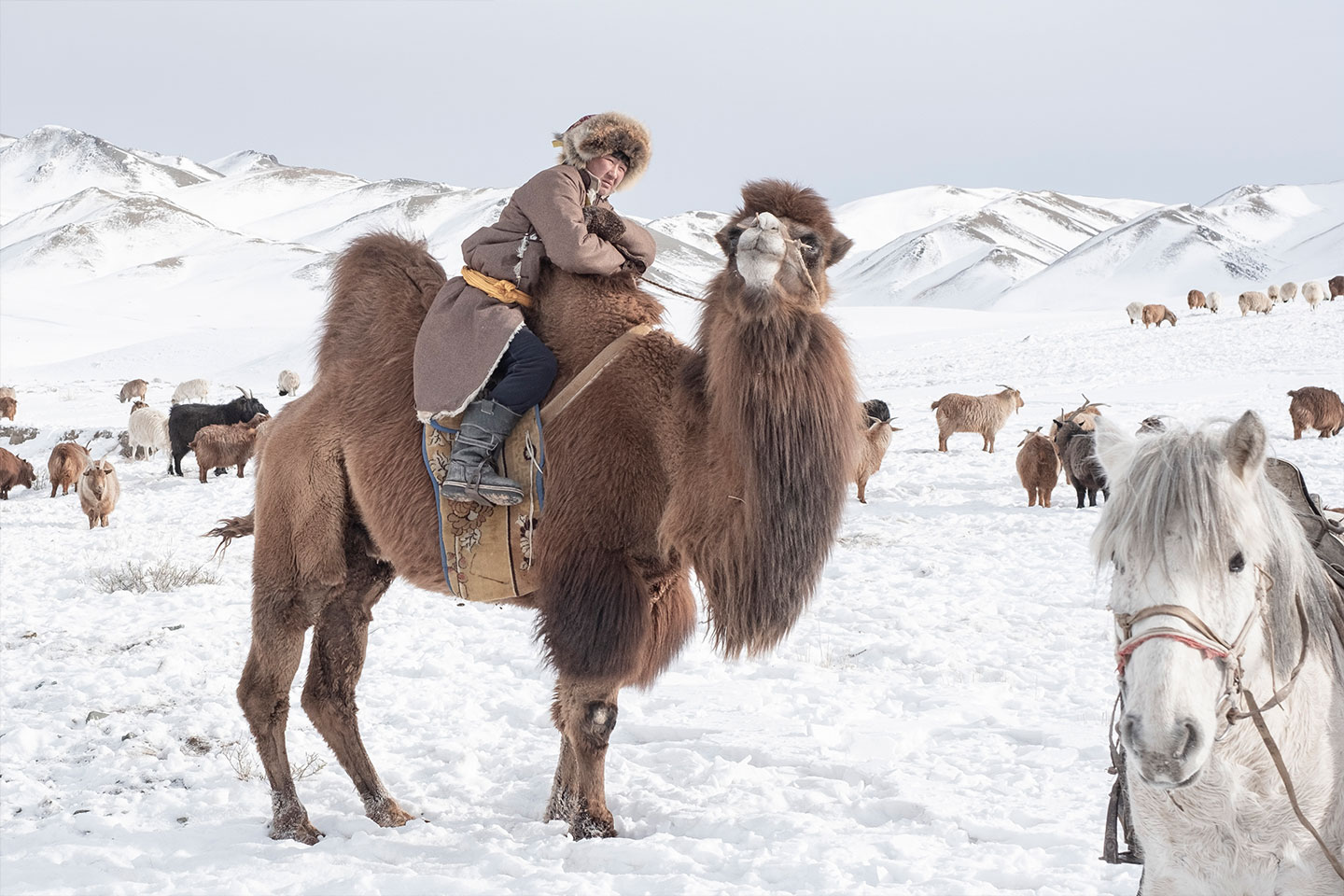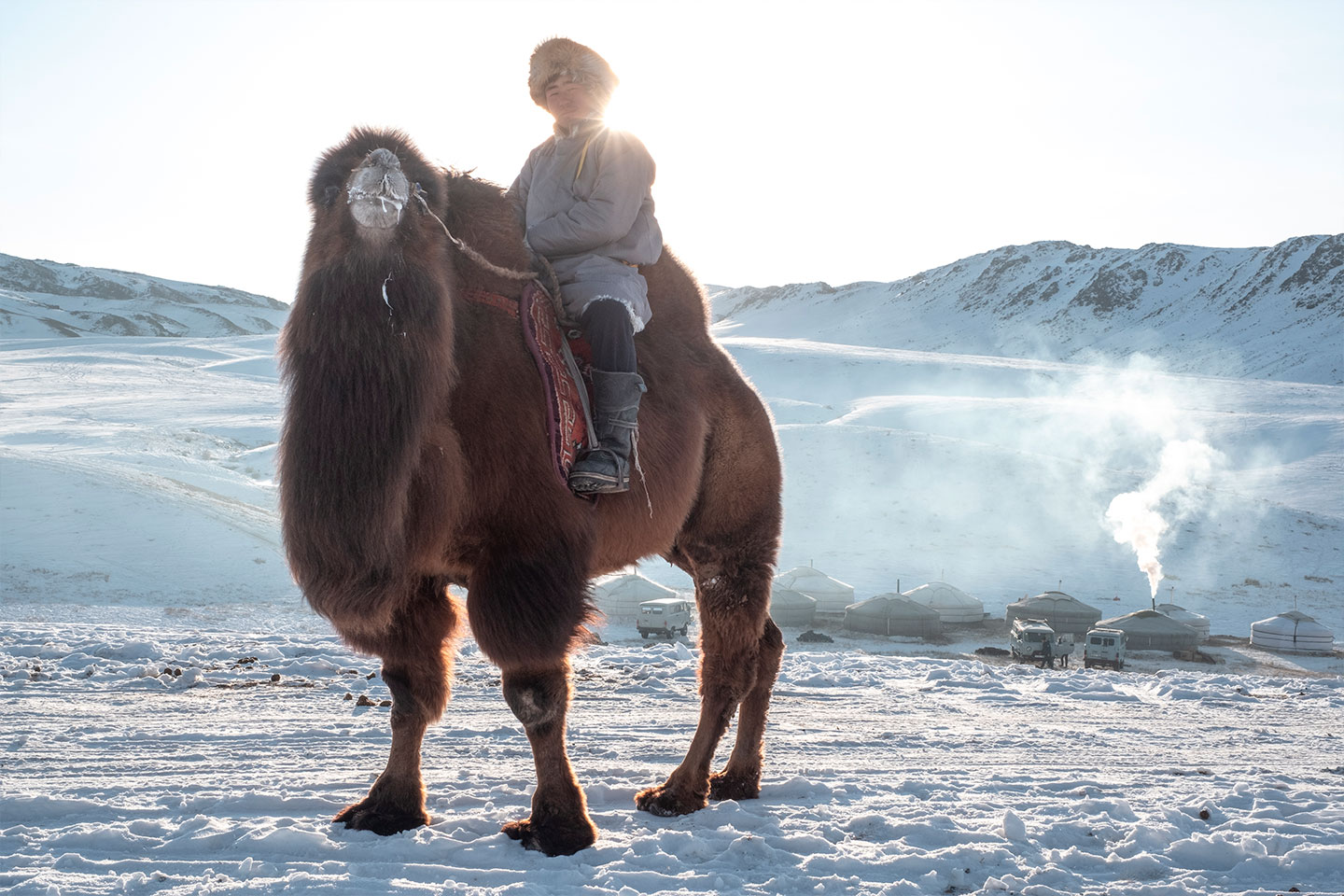A quick comprehensive primer to make sure you’re looking out for the real thing.
Cashmere – a luxurious, ultra-soft fine material coveted across a whole range of winter wear, from super-soft pullovers and oversized scarves to full-length dresses and coats that feel like the most heavenly of bear hugs. From how this increasingly commodotised material is harvested, to finding the right cashmere on the market for you, we bring you a quick guide to understanding this plush fabric and how to shop for it this season.
Cashmere is not wool
Wool comes from sheep; cashmere comes from goats – namely Capra Hircus goats that originally inhabit the high mountainous regions of China, India, Iran, Afghanistan, and Iraq. Winters in these areas can go down to as low as -40 degrees Celsius, and these goats have adapted to the climate by growing a super soft, downy undercoat that can be harvested by hand during the Spring molting season – this is cashmere. Cashmere is up to 10 times warmer than even merino wool, a more refined fleece bred in Australia and New Zealand, and is much softer and lighter, with a silky feel. It takes at least two goats to make one two-ply cashmere sweater, whereas the wool from one sheep can be used to make four or five conventional wool sweaters.
Baby cashmere is the most premium cashmere
 Baby cashmere is the ultra-fine, impossibly soft cashmere underfleece, found on the young Capra Hircus kid goats. Each baby goat only yields up to 30g of baby cashmere only once in its lifetime, as opposed to 150g of cashmere from an adult goat every year of its life. This under-fleece is extraordinarily soft (each fiber measures 15% finer than an adults) but yields such small quantities that they are usually simply mixed in with those of the older animals. Italian luxury cashmere brand Loro Piana works with goat herders in Inner Mongolia to separate out this baby cashmere to be processed separately, thus yielding the most exquisite of pure material.
Baby cashmere is the ultra-fine, impossibly soft cashmere underfleece, found on the young Capra Hircus kid goats. Each baby goat only yields up to 30g of baby cashmere only once in its lifetime, as opposed to 150g of cashmere from an adult goat every year of its life. This under-fleece is extraordinarily soft (each fiber measures 15% finer than an adults) but yields such small quantities that they are usually simply mixed in with those of the older animals. Italian luxury cashmere brand Loro Piana works with goat herders in Inner Mongolia to separate out this baby cashmere to be processed separately, thus yielding the most exquisite of pure material.
High quality cashmere should not pill – much
Raw cashmere hair is sorted into grades based on the length and thickness of the hair. Top grade cashmere is finer and longer, and usually harvested from the neck and underbelly of the goat – this means that it forms a tighter weave and will not pull out of the garment’s surface as easily as lesser grade cashmere, which is made of shorter, coarser hairs. Unfortunately, pilling doesn’t become apparent until you’ve worn the garment a few times – but when you’re shopping around, go ahead and feel the texture of the fabric, and even pull or rub lightly on the weave. If you start to notice the fibres already beginning to pull away, don’t buy it. However, if your garment doesn’t seem to pill at all, you should also be alerted to the presence of synthetic fibres. I know, it’s tricky!
Super soft does not always mean super premium
While we have been going on a bit about the gorgeously plush, face-rubbing qualities of premium cashmere, here is a warning that super soft can also be the result of over-washing lower grade cashmere. This will produce something ridiculously soft for the point of sale, but it’s not going to last very long, unfortunately. In reality, good cashmere will soften over time, so the real thing will not only stand the test of time, but also get better with age. However, when faced with the dilemma of a super soft cashmere item in store, practise common sense and ask yourself if it sounds too good to be true – is the price a bit too low – and if so, you should consider yourself forewarned.
Blends are not necessarily a bad thing

While it’s important to understand what the real thing should look and feel like, we also shouldn’t overlook the utilitarian functionality of a good cashmere blend. 100% cashmere garments are truly luxurious items which aren’t meant to be worn everyday, and require careful handwashing and lots of TLC – cashmere blends, on the other hand, can be more resilient and more suitable for regular, everyday wear. Cashmere blended with high-quality wool can produce a soft garment that keeps its shape for a much lower price point; silk-cashmere blends produce a strong but thin fabric that’s not quite as soft but has a subtle sheen; and cotton-cashmere blends produce a cooler temperature sweater with some of the same softness qualities as traditional cashmere.
Cashmere can be ethically-sourced
Although cashmere production has been around for hundreds of years (apparently Napoleon’s wife Queen Josephine was mad for the cashmere shawl and made it fashionable among the European elite in the late 1700s), cashmere demand only went mainstream in the 1970s when laws liberalising international trade were passed in China. Cashmere cultivation expanded rapidly, ushering in an era of mass production that caused prices to steadily fall, as well as overgrazing of land. However, there are ethical fashion companies like Stella McCartney and Loro Piana stepping into the supply chain to help improve the welfare of cashmere goat herders, as well as more sustainable systems for production. “The Loro Piana Method” emphasises smaller herds, and through selective breeding ensures higher annual volumes of better quality fibre, which leads to increased revenue even for herders with small flocks.
What can I expect to pay for cashmere?

When you buy high quality cashmere, you’re often not only paying for the painstaking production of the fine material, but also the design, brand name, or a heritage factory – all things that might be important to you, and thus worth the money. Top of the line heritage brands producing luxury cashmere in Europe are names like Brunello Cucinelli and Loro Piana, and you can expect to pay something in the region of SGD$2000 for a pure cashmere sweater. Cuyana and Naadam are smaller, newer direct-to-consumer brands and offer mid-range options that start from around $900 for pure cashmere, or $500 for a high-quality blend.
Images courtesy of Loro Piana, artwork by Curatedition. All rights reserved.





